Tea Leaf Reading Interpretation
Tea leaves not only offer a warm beverage; they can also serve as a fascinating tool for personal transformation and healing. By engaging in the ancient practice of tasseography, you may uncover insights about your emotional landscape and mental barriers. This introspective method encourages self-reflection and can help illuminate paths toward personal growth. As you explore the intricate shapes formed by tea leaves, you might just discover valuable guidance for navigating your own journey of change and recovery.
Just as tea leaves swirl in your cup, so too can they unveil insights about your journey towards transformation and healing. By interpreting the patterns formed by used tea leaves, you may gain profound perspectives on your emotional and spiritual state. This ancient practice encourages you to connect with your intuition, offering a unique lens through which to view your growth and challenges. As you sip, you might discover that the wisdom hidden in your cup can help navigate the complexities of your inner world.

Key Takeaways:
- Reading tea leaves can provide symbolic insights that reflect personal experiences and emotional states, aiding in self-discovery.
- This practice allows individuals to engage with their intuition, fostering a deeper connection to their inner selves during times of transformation.
- Interpreting the shapes and patterns of tea leaves can serve as a therapeutic exercise, promoting mindfulness and reflection.
- Connecting the interpretations with personal circumstances may enhance one’s understanding of their healing journey.
- Tea leaf reading can be a fun and engaging way to explore themes of change, encouraging openness to new perspectives.
- Reading tea leaves can serve as a reflective practice, allowing individuals to explore their inner thoughts and emotions related to transformation and healing.
- The symbolism in tea leaf patterns may offer insights into personal challenges and opportunities for growth during times of change.
- This practice encourages mindfulness, helping individuals to focus on the present moment and their current state of being.
- Tea leaf reading can enhance intuition, fostering a deeper connection to one’s own healing process and decision-making.
- Incorporating tea leaf reading into wellness routines can create a sense of ritual, contributing to emotional and psychological well-being.
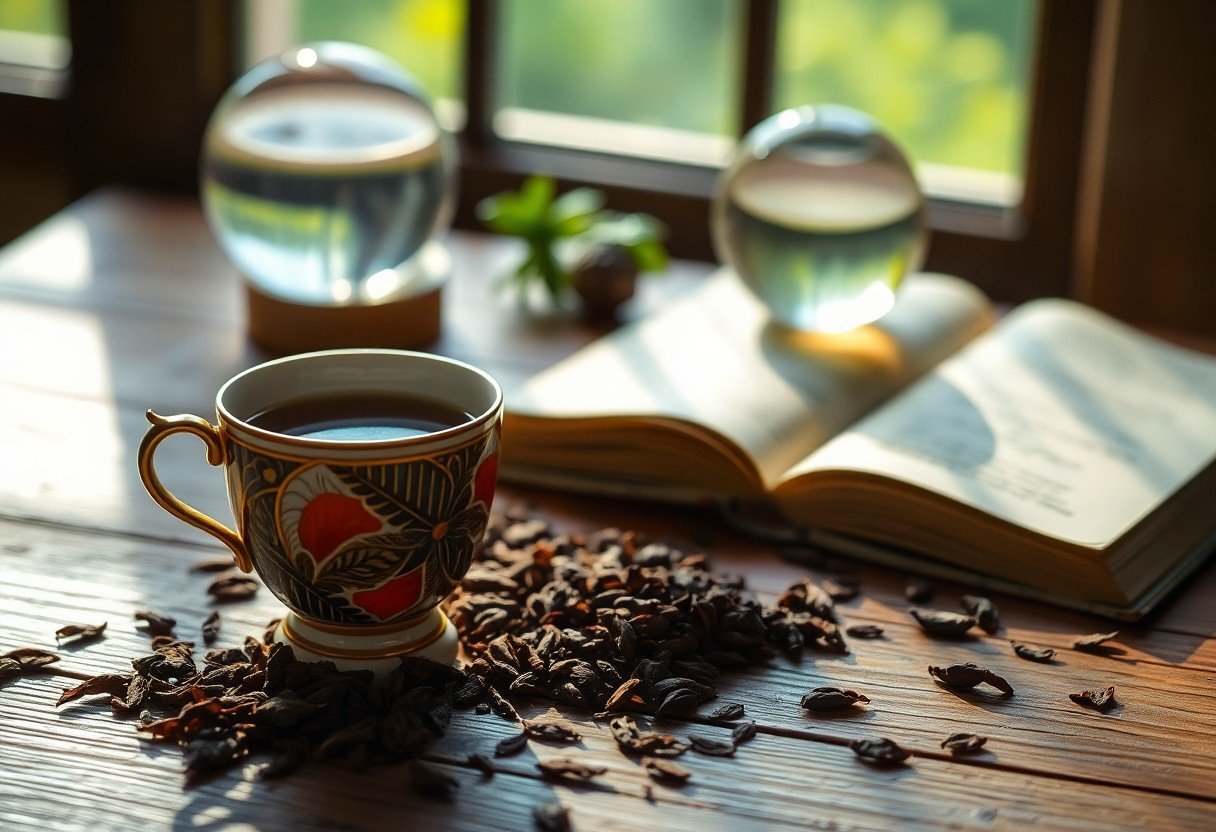
Revealing Patterns: The Art of Tea Leaf Reading
Historical Origins and Cultural Significance
Tea leaf reading, also known as tasseography, has roots that stretch deep into ancient civilizations. It is believed to have originated in China around 2737 B.C. when the Emperor Shen Nong discovered tea. Over centuries, as tea spread to Europe and the Middle East, it developed into a form of divination, merging with local traditions and customs. Each culture adopted unique symbols and meanings associated with the patterns created by the tea leaves, making this practice a rich tapestry of human experiences and interpretations. In many cultures, the act of interpreting tea leaves can reflect the reader’s understanding of life’s transformations, offering insights into personal growth and healing.
The significance of tea leaf reading extends beyond mere fortune telling. It serves as a cultural bridge, offering insight into the values, traditions, and beliefs of those who practice it. For instance, Romani Gypsies are known for their expertise in this art, often blending it with their unique narrative styles and cultural lore. Similarly, in the Victorian era, tea leaf reading became a popular pastime among the upper and middle classes, further embedding this practice within societal norms and social gatherings. The significance of tea leaf patterns can mirror not only the individual’s journey but also broader cultural developments, tapping into collective unconscious themes.
Techniques for Reading Tea Leaves
The process of reading tea leaves combines both ritual and intuition. After enjoying a cup of loose leaf tea, you would gently swirl the remaining liquid before turning the cup upside down to let the leaves settle. The shapes formed by the leaves are believed to convey messages about your life or future, encouraging you to interpret what you see. As you gaze into the cup, common symbols may emerge such as animals, figures, or objects, each rich with meaning. For example, a heart might represent love, while a tree could symbolize growth or stability. Understanding these symbols often requires both practice and an intuitive connection to your own experiences.
There’s also a communal aspect to this practice, especially when it takes place in a social setting. Engaging with friends or family while reading tea leaves can enhance the experience, inspiring shared interpretations and discussions. This collaboration lends itself to a deeper understanding of the patterns and how they may apply to each person’s individual journey. The combination of personal insight and collective reflection can foster a sense of healing, as the act of decoding the leaves often ushers in revelations that anchor you in the present while paving a pathway towards transformation.
The Ancient Art of Tea Leaf Reading
Historical Origins and Cultural Significance
Tea leaf reading, also known as tasseography, has roots that trace back to ancient civilizations. The practice evolved alongside the rise of tea culture in Asia, particularly in China, where it was believed to provide insights into an individual’s life and destiny. By the late 17th century, this intriguing art form found its way to Europe, where fortune-telling became popular in salons and homes. The association of tea with social gatherings not only fueled its popularity but also embedded tea leaf reading into societal rituals, symbolizing connection and conversation as much as fortune-telling.
In various cultures, the practice took on unique flavors and meanings. For instance, the Romani people embraced tea leaf reading as part of their broader divination practices, attributing spiritual significance to the symbols revealed in the leaves. In contrast, in Western contexts, reading tea leaves became more of a casual pastime, a means to provoke thought and reflection rather than serious fortune-telling. Understanding these historical contexts adds depth to your appreciation of the art, highlighting how it transforms from a simple act of drinking tea into a profound exploration of life’s mysteries.
How Tea Leaves are Interpreted in Various Traditions
Interpretations of tea leaves can vary significantly based on cultural context and personal intuition. In traditional Chinese tea leaf reading, specific symbols like dragons or clouds represent distinct meanings—dragons may symbolize power and success, while clouds could indicate transformation and change. This method involves analyzing the shapes and densities of the leaves left in the bottom of the cup, as well as their arrangement. In contrast, in Western practices, interpretations may rely heavily on the emotional responses evoked by the shapes formed by the leaves, with readers often using a personal repository of meanings or a provided guide.
Various traditions also differ in their approaches to the reading process. Some practitioners focus on the shapes and configurations of the leaves, aligning them with personal intuition to provide insights into the querent’s life. Others may consult established symbolism from various guides or documents that detail potential interpretations for certain shapes or patterns. This adaptability allows you to find a style that resonates with your own understanding of intuition and insight, emphasizing the personal nature of the practice.

The Psychological Connection: Tea Leaves as a Reflection of Mindset
How Interpretation Mirrors Personal Struggles
As you gaze into the formed shapes and patterns of your tea leaves, you may find that the interpretations echo your personal experiences and ongoing challenges. This deeply personal connection transforms the practice from mere divination to a deeply introspective process. Patterns that emerge might shed light on fears, hopes, or unresolved issues in your life. For instance, a swirl resembling a heart could symbolize current emotional struggles or the potential for healing in relationships, prompting you to reflect on facets of your emotional health and interpersonal connections.
It’s not uncommon for tea leaf readings to reveal startling alignments with your current mindset. People often report that the imagery within their cups aligns surprisingly well with their life circumstances. For example, if a shape resembling a barrier or wall appears, it might correlate with feelings of stagnation or obstacles you’re facing. Engaging with these insights allows you to see your concerns in a new light, encouraging personal growth and self-awareness.
The Role of Intuition in the Healing Process
Intuition plays a pivotal role in the tea leaf reading experience, weaving a fabric of understanding that can lead to profound healing. Your gut feelings can guide interpretations that resonate with your inner truth, unlocking pathways toward mental and emotional wellness. Engaging with the tea leaves in a meditative state may enhance your ability to connect deeply with your intuition, allowing you to discover solutions and insights that lead to transformation.
This intuitive process demands an open mind, encouraging you to trust your instincts when interpreting the shapes and symbols presented. Since your intuition is often shaped by your subconscious experiences and wisdom, teh readings can become a bridge to deeper insights that may be difficult to access through rational thought alone. Understanding that this subtle guidance springs from the very essence of your life experiences empowers you throughout your healing journey.
Unveiling Symbols: What Tea Leaves Reveal About Inner Transformation
The Language of Symbols and Their Meanings
The symbols that emerge from your tea leaves are not mere random shapes; they have deep, personal meanings that resonate with your journey of transformation and healing. Each image, whether it’s a heart, a star, or an animal silhouette, conveys specific messages about your emotional and spiritual state. For instance, a heart may suggest a focus on love and relationships, while a star can symbolize guidance and hope. By interpreting these symbols, you can gain insight into your current life challenges and the potential pathways for growth.
Tea leaves act as a mirror that reflects your subconscious thoughts and feelings. Engaging with them requires you to trust your intuition, allowing you to discern what resonates with your lived experiences. The longer you practice reading these leaves, the more adept you become at recognizing the unique symbols that relate specifically to your life, enhancing your conscious awareness and opening doors to self-discovery.
Identifying Patterns: Personal Insights Through Tea Leaves
Patterns in tea leaves offer a deeper understanding of recurring themes in your life. As you pour over the remnants of a cup, consider the shapes, placement, and frequency of symbols. For example, if you consistently see a particular shape like a circle, it could signify wholeness or completion in areas where you may be feeling fragmented. In contrast, jagged shapes may indicate conflict or unresolved issues. This process encourages you to connect the dots between these symbols and the experiences you’ve encountered, guiding you toward a path of clarity and resolution.
As you reflect on these patterns, you may uncover connections among various aspects of your life that you hadn’t noticed before. The process can catapult you towards important insights regarding relationships, career choices, and personal aspirations, revealing how your past influences your present. By documenting these symbols and the thoughts they evoke, you create a personalized roadmap that helps navigate your transformation.
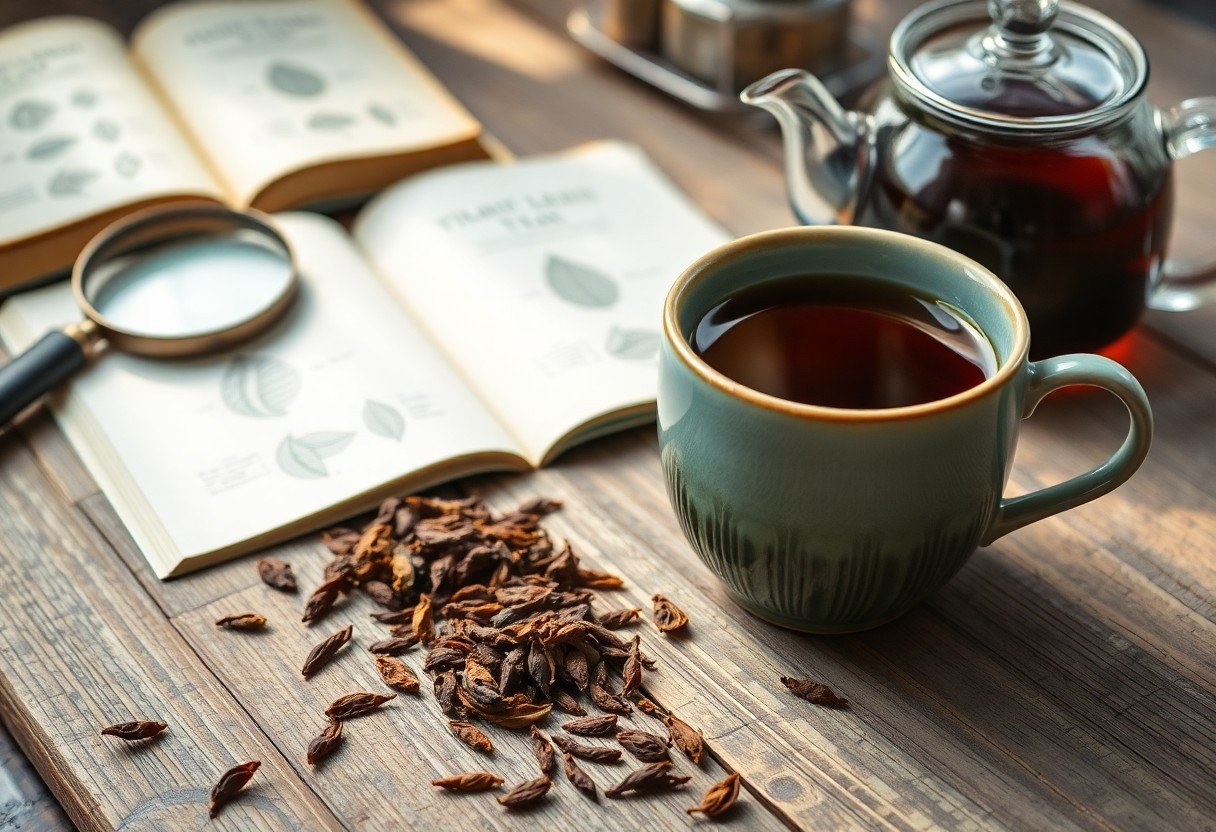
Tea Leaves and Transformative Experiences
Symbolic Meanings and Personal Insight
The shapes and patterns formed by tea leaves can reveal profound insights about your life and personal journey. Each swirl, dot, and line carries its own symbolic meaning, often reflecting your current emotional state or the underlying issues you may be grappling with. For instance, a heart shape might indicate a need for love or closure in a relationship, while a spiral could suggest a journey toward personal growth and transformation. Engaging with these symbols allows you to uncover deeper aspects of yourself that may not be readily visible in your day-to-day life.
Your intuition plays a vital role in interpreting these symbols. The connection you have with the tea leaves might spark memories, feelings, or even subconscious thoughts that can guide your self-reflection. This encounter facilitates a unique dialogue with your inner self, allowing you to explore possibilities for healing and change. You may find that the leaves prompt you to confront fears, embrace aspirations, or even redefine your priorities, ultimately steering you toward a more fulfilled existence.
Case Examples of Transformation through Tea Reading
Stories of individuals who have undergone significant transformations through tea reading abound, illustrating the powerful effects of this practice. One participant, after engaging in a tea leaf reading, discovered a recurring motif of water. This symbol prompted her to explore her emotions more deeply, leading her to understand a pattern of avoiding vulnerability in relationships. Armed with this newfound knowledge, she began taking steps to connect with her emotions and share them with loved ones, ultimately leading to richer and more meaningful connections in her life.
Another case involved a man struggling with career dissatisfaction. Through his tea leaves, he noticed a figure of a mountain that signified both challenges and aspirations. Recognizing this symbol allowed him to reflect on his career path and consider what truly resonated with him. As a result, he decided to pursue his passion for art, leading to personal fulfillment he previously thought unattainable. These examples highlight how tea leaf reading can serve as a catalyst for profound changes, encouraging you to engage with your life’s narrative in a new way.
Case studies like these reveal the transformative power of tea leaf reading for many individuals. Engaging with symbols found in the leaves can foster a deep understanding of your own experiences, acting as a bridge between your conscious thoughts and unconscious patterns. Whether it’s about love, career, or personal growth, tea leaves have become a tool for reflection and a starting point for initiating change. Through the process of interpretation and reflection, you might uncover vital aspects of your identity and aspirations that empower you to embrace your journey towards healing.
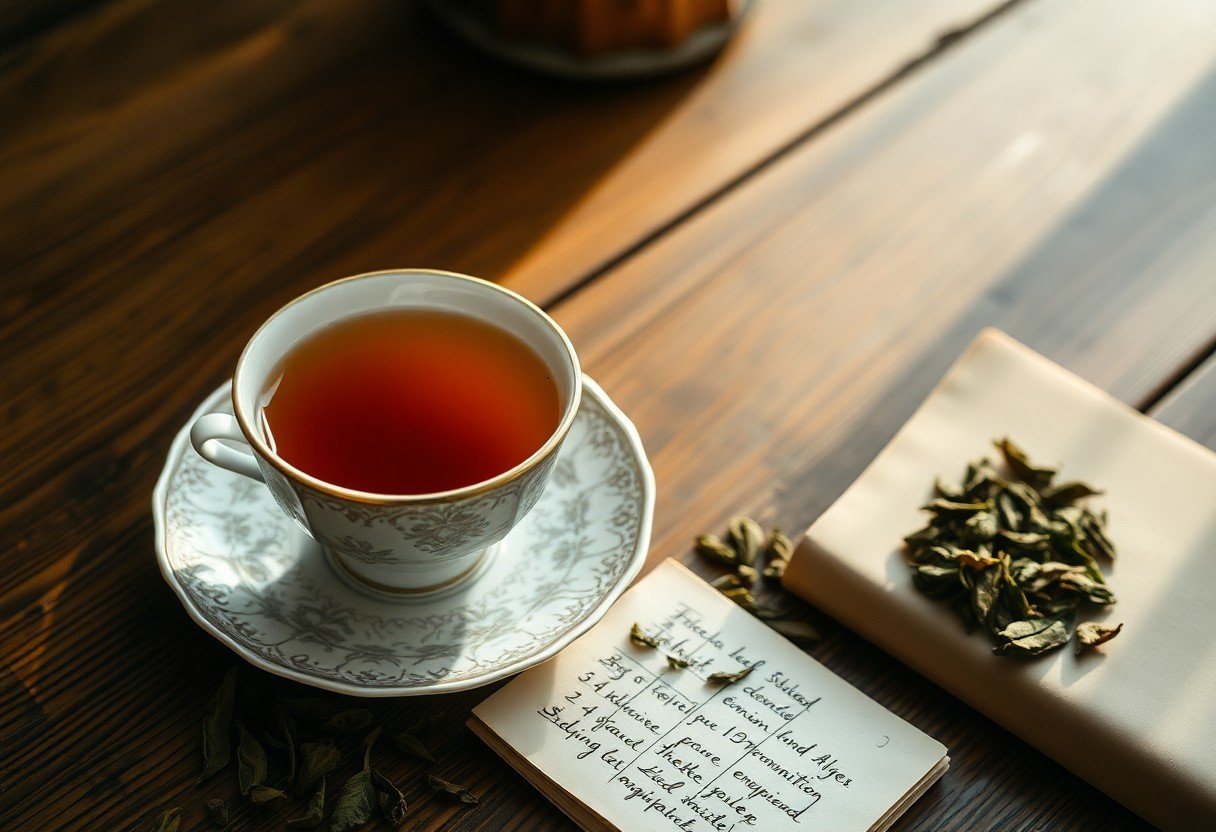
The Role of Intuition in Tea Leaf Interpretation
Reading tea leaves is as much about your inner knowing as it is about the shapes formed in the remnants of your cup. Intuition acts as a bridge between the subconscious and the conscious, allowing you to perceive meanings that might not be immediately evident. As you sip your tea and focus on the swirling patterns, you invite your intuition to engage, uncovering insights that are uniquely tailored to your life’s journey. The interpretations you derive from the leaves can often reflect your current emotional landscape, guiding you toward a deeper understanding of your transformative process.
This intuitive connection helps you to navigate your healing path, as you learn to trust your instincts while decoding the imagery found within the tea leaves. Each session can serve as a reflective practice, revealing patterns or symbols that are relevant to your current situations, emotions, and aspirations. As a result, the more you practice this intuitive reading, the sharper your insight will become, leading you to personal revelations that may influence your decisions and actions.
Balancing Logic and Intuition in Self-Discovery
Finding equilibrium between logic and intuition is important for an effective tea leaf reading experience. As you investigate into the enigmatic shapes, allowing your logical mind to play a supportive role can enhance the clarity of your interpretations. Recognize that while logic helps frame the context of your readings—enabling you to incorporate broader life experiences—the true magic lies in the intuitive insights that emerge. You may discover that a seemingly abstract shape resonates with a specific emotion or situation in your life, providing a deeper connection that logic alone might overlook.
This balance also cultivates a safe space for self-discovery. By acknowledging your logical thoughts without letting them dominate, you can foster an atmosphere where intuition feels free to surface. Encourage yourself to embrace the symbols and impressions that arise during the reading, as they often hold the key to understanding the changes and healing you seek. Integrating both aspects into your practice creates a richer, more layered understanding of your transformation journey.
Techniques to Enhance Intuitive Skills for Effective Reading
Expanding your intuitive abilities involves engaging in practices that sharpen your awareness and deepen your connection to the symbols in your tea leaves. One effective technique is mindfulness meditation, which centers your thoughts and helps clear distractions, allowing intuitive insights to flow more freely. Setting intentions before your reading can also be beneficial; focusing on specific questions or areas of your life can direct your intuition toward relevant insights. You might find journaling to be another valuable tool, as writing down your thoughts and interpretations post-reading can unveil patterns and sharpen clarity over time.
Additionally, experimenting with different types of tea can open new doors to your intuitive journey. Each variety holds unique energies and associations, allowing you to experiment with what resonates most with your readings. For instance, a herbal infusion might evoke calming sensations, further aligning you with your inner voice, compared to a more stimulating green tea that could energize your thought process. Slowly incorporating these techniques into each reading can significantly enhance both your intuition and your overall experience in interpreting tea leaves.
Practical Guide: Incorporating Tea Leaf Reading into Self-Care
Steps for Practice and Reflection
Setting the stage for your tea leaf reading ritual can significantly enhance your experience. Begin by selecting a quiet, comfortable space where you can focus without distractions. Choose a loose-leaf tea, such as green tea or rooibos, which are known for their clarity of leaves when steeped. Brew the tea mindfully, allowing the steam to ground you in the moment. After enjoying the drink, pour the remaining tea into a small cup, ensuring to leave a little liquid behind with the leaves. As you absorb the visual patterns formed, take a moment to set an intention for your reading, whether it’s related to personal growth, healing, or a specific area of your life that you seek insight into.
With your intention set, lean in closer to examine the residue, noticing any symbols or formations that resonate with you. These shapes can vary greatly—from spirals that indicate transformation to triangles that suggest stability. Write down your first impressions or draw the tea leaf patterns in a journal. This reflection process will help you digest the messages presented by your tea leaves and allow you to track your progress over time.
Integrating Mindfulness and Intention Setting
By weaving mindfulness and intention into your tea leaf reading practice, you cultivate a deeper connection with your inner self. Mindfulness encourages you to fully engage with the moment, focusing on your breath and sensations as you navigate the reading. When you approach the practice with a specific intention, the tea leaves become more than just a game of chance; they transform into a medium for your subconscious thoughts and aspirations. This holistic approach can facilitate profound personal insights.
Consider starting each session with a moment of calmness, perhaps through meditation or breathing exercises, to clear your mind. Once grounded, state your intention clearly, whether it’s about healing a particular relationship or understanding your life path. As you pour over the leaves, let the shapes speak to you without judgment. This balance between mindfulness and intentionality will empower you to explore not just what the tea leaves reveal, but also how they resonate within your life’s journey.
Integrating mindfulness and intention setting into your practice allows you to approach tea leaf reading as a ritual rather than a mere novelty. Focusing on each aspect of your experience—from selecting the tea to interpreting the leaves—can provide a more fulfilling and transformative experience. As you engage with these elements, the interpretations may not just reflect the leaves but also the changing circumstances of your life, thus supporting both healing and personal transformation.
Practical Ways to Incorporate Tea Leaf Reading in Healing Practices
Creating a Mindful Space for Tea Leaf Reading
To begin your tea leaf reading journey, creating a mindful space is imperative. This environment should be free from distractions and filled with elements that inspire tranquility. Consider surrounding yourself with items that resonate with you, such as candles, crystals, or plants. These can not only enhance the atmosphere but also contribute to your sense of connection with the tea leaves and your own intuition. Choose a comfortable seating arrangement where you can sit undisturbed, allowing for a deep focus on both the tea leaves and your internal thoughts.
You might also find it beneficial to introduce sensory elements into this space, like soft music, incense, or imperative oils. These can help ground you and promote a state of relaxation, making it easier to access your insights. As you prepare for your reading, take a few moments to engage in deep breathing or meditation, allowing your mind to clear and your intuition to come to the forefront. The energy of that space will significantly influence your ability to interpret the messages held within the tea leaves.
Rituals and Practices to Foster Transformation Through Tea Leaf Insights
Incorporating specific rituals and practices can deepen your tea leaf reading experience, leading to meaningful transformation. For instance, you may choose to set an intention before each reading session—this could be related to personal growth, healing, or clarity on a particular issue in your life. By focusing on this intention, you create a direct link between what the tea leaves reveal and your current life path, amplifying the effectiveness of the insights you gain.
Documenting your tea leaf readings in a dedicated journal can serve as another transformative practice. Write down the symbols you see, the feelings they evoke, and any insights that arise during or after the reading. Over time, you may start to identify patterns or themes in your readings that illuminate your journey. Furthermore, sharing your experiences with a supportive community, whether in person or online, can provide additional perspectives and aid your healing process.
Regular rituals, such as sipping tea while reflecting on a specific aspect of your life or using visualizations during the reading, can also enhance your connection to the tea leaves. These practices help forge a deeper understanding of both the reading itself and your personal growth journey, revealing layers of meaning that may not have been immediately apparent. By fostering these transformative elements, you can unlock profound insights that allow you to heal and evolve on multiple levels.
Skepticism and Acceptance: The Debate on Tea Leaf Reading’s Validity
Scientific Perspectives on Divination Practices
You may find that many scientists approach divination practices, including tea leaf reading, with skepticism rooted in the demand for empirical evidence. The scientific method emphasizes repeatable experiments and observable outcomes, neither of which can be easily applied to the interpretation of tea leaves. Studies from psychology suggest that phenomena such as the Barnum effect—where individuals believe vague and general statements to be highly relevant to them—can explain some of the perceived accuracy of divination practices. When you recognize that individuals often see patterns and meanings in random data, it can challenge your understanding of how tea leaf readings work.
However, dismissing reading tea leaves outright based on scientific skepticism does not account for individual experiences. People often report profound insights gained from these sessions, suggesting a level of personal and subjective validity. This view is supported by research that explores how subjective experiences shape one’s reality, leading to transformative moments or meaningful realizations. As a result, the divide between scientific skepticism and personal belief continues to grow, presenting an ongoing debate about the value and efficacy of tea leaf reading in understanding one’s life path.
The Balance Between Belief and Empirical Evidence
Navigating the complex terrain between belief and empirical evidence requires a personal examination of your values and priorities. While you may be drawn to the mystical allure of tea leaf readings, the lack of concrete scientific backing can create friction within your understanding. This friction may result in questioning the legitimacy of what you feel, particularly when it comes to making life-altering decisions based purely on readings. Striking a balance between respecting your experiences and mindful skepticism can enrich your exploration of transformation and healing.
Your perspective on tea leaf reading might shift as you discover the role of belief in mental and emotional healing. Various studies indicate that the act of engaging in rituals—whether divination, meditation, or even simple mindfulness practices—can have demonstrable effects on psychological well-being. Embracing tea leaf reading as part of a broader spectrum of healing modalities might allow you to find meaning and comfort even within the uncertainty of its scientific validity.
Finding this balance can be transformative in itself. Acknowledging that human experience often defies strict scientific categorization encourages openness to various healing modalities, including tea leaf reading. Rather than viewing the world strictly through the lens of skepticism or absolute acceptance, adopting a nuanced understanding allows you to evaluate your experiences holistically. You may discover that engaging in tea leaf reading doesn’t have to rely solely on empirical evidence; instead, it can serve as a bridge to deeper self-reflection, personal intuition, and understanding your transformative journey.
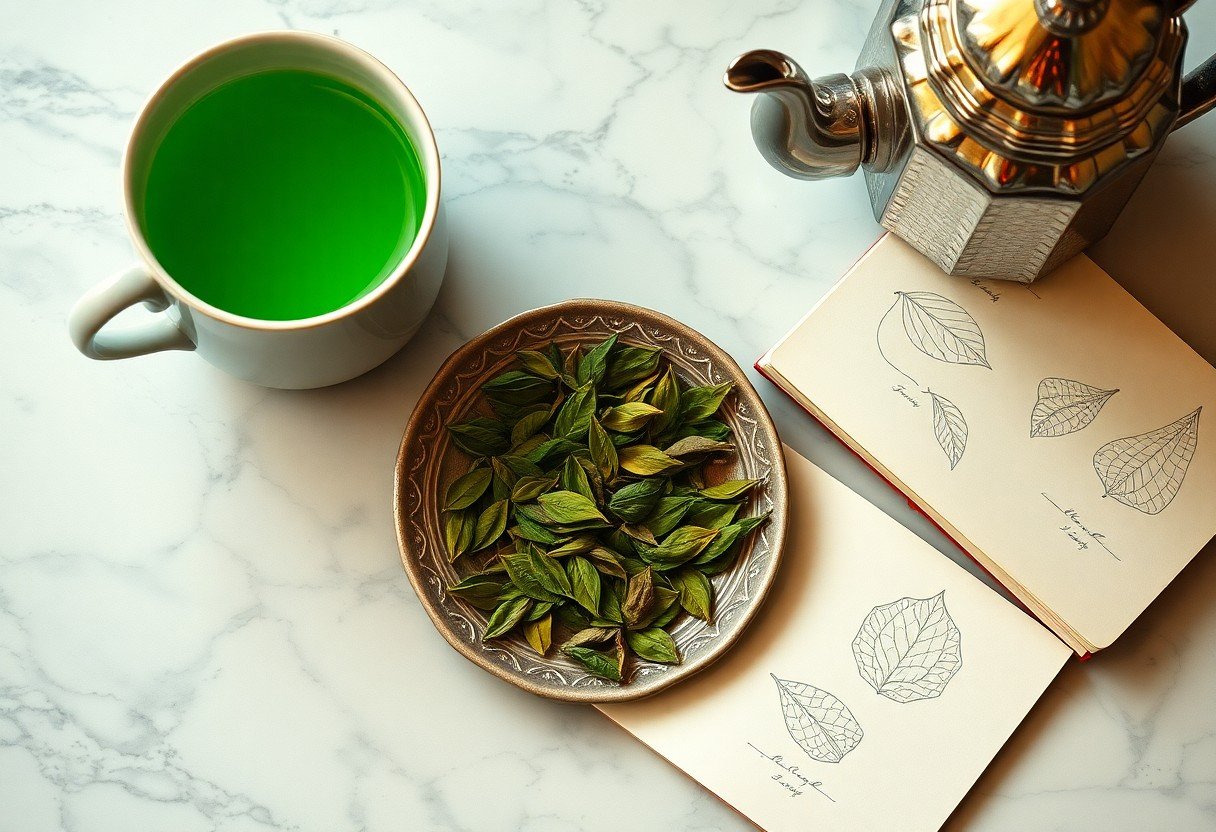
Challenging Conventional Wisdom: The Science Behind ReadingTea Leaves
Psychological Benefits of Symbolic Interpretations
The practice of reading tea leaves transcends mere fortune-telling; it fosters a unique form of introspection. Engaging with the symbols that emerge can help you identify your innermost thoughts and feelings that may not be readily visible in your daily life. By interpreting the patterns and shapes, you create a reflective space where your psyche can express itself, often revealing profound insights about your current state or future direction. This self-reflective practice can lead to increased self-awareness and even emotional release, which are significant components of healing.
Many individuals report feeling a sense of empowerment and clarity after engaging in tea leaf reading. The act of projecting your thoughts onto the interpretations allows you to externalize and contemplate your circumstances and aspirations. This psychological distance can help you break through mental barriers and generate new perspectives on challenges you face, ultimately aiding in your personal transformation journey.
Bridging the Gap Between Mysticism and Modern Psychology
Modern psychology recognizes the profound value of metaphor and symbolism in influencing people’s thoughts and behaviors. The interpretations drawn from tea leaf readings can serve as powerful metaphors that resonate on an emotional level. Cognitive-behavioral therapy, for instance, often utilizes imagery and narrative techniques to facilitate healing. Likewise, the symbolic meanings you derive from your tea leaves can function similarly, helping you reframe your perceptions and experiences.
Psychologists might argue that this mystical practice is not so distant from scientific principles; rather, it enriches understanding of how human beings connect with their environment and shared symbols. By confronting the abstract ideas represented in the tea leaves, individuals can unearth their beliefs and motivations, much like how narrative therapy encourages clients to explore their life stories to find healing and transformation. Those symbols often lead to a deeper psychosocial dialogue, offering a holistic approach to self-discovery.
To wrap up
Ultimately, exploring the practice of reading tea leaves can offer you a unique lens through which to view your own journey of transformation and healing. This ancient form of divination encourages you to engage with your subconscious mind, allowing you to tap into insights and intuitions that may not be readily accessible through logical thinking alone. By interpreting the symbols and patterns left in your tea leaves, you may find guidance on personal challenges, helping you connect more deeply with your emotions and experiences, ultimately fostering a sense of empowerment and clarity on your healing path.
Incorporating tea leaf reading into your self-care routine can enhance your understanding of emotional and spiritual growth. This practice invites you to reflect on your life’s narrative and offers a creative space for you to manifest your intentions. Whether you are seeking answers, insight, or merely a moment of contemplation, the ritual of tea leaf reading can deepen your connection to your inner self, supporting your transformation and healing journey in a profound and meaningful way.
Conclusion
As a reminder, reading tea leaves offers an intriguing lens through which you can explore your own journey of transformation and healing. While this ancient practice may seem unconventional, it holds the potential to reveal insights and reflections about your life. By interpreting the shapes and patterns formed by the tea leaves, you can engage in a process of self-discovery that encourages you to confront your emotions, thoughts, and desires. This practice invites you to pause and reflect, fostering a deeper understanding of both your past experiences and your aspirations for the future.
Ultimately, engaging in tea leaf reading could serve as a therapeutic tool, promoting mindfulness and personal growth. As you cultivate this skill, you may find that it enhances your intuition and helps you connect with your inner self on a profound level. Embracing this practice can empower you to navigate life’s challenges more effectively, enabling you to initiate on a path of healing and transformation. By listening to the messages from your tea leaves, you may uncover valuable insights that lead to a more fulfilled and purposeful existence.
FAQ
A: Reading tea leaves, also known as tasseography, is an ancient form of divination that involves interpreting the patterns formed by tea leaves remaining at the bottom of a cup after the tea has been consumed. This practice can be associated with transformation and healing as it encourages individuals to reflect on their current circumstances, uncover hidden emotions, and gain insights into their personal journeys. By understanding these elements, one may find clarity, which can lead to healing and personal growth.
Q: Can reading tea leaves provide guidance for personal transformation?
A: Yes, reading tea leaves can offer guidance for personal transformation by helping individuals to see their situations from a different perspective. The symbols and patterns in the tea leaves may reveal aspects of one’s life that require attention or change. This self-reflective process can prompt action and motivate individuals to seek positive transformation in their lives.
Q: How can the insights gained from tea leafs aid in emotional healing?
A: Insights gained from tea leaf reading can aid emotional healing by highlighting unresolved emotions or past experiences that may be impacting one’s current well-being. By confronting and processing these emotions, individuals can begin to release emotional burdens and cultivate a sense of peace. Understanding the messages from the tea leaves can also lead to new coping strategies and healthier thought patterns.
Q: Is tea leaf reading scientifically proven to aid in transformation and healing?
A: While tea leaf reading is not scientifically proven in a traditional sense, many individuals find it to be a valuable tool for self-reflection and understanding. The benefits often stem from the introspective process that accompanies the reading rather than the practice itself. Engaging in this ritual can foster mindfulness and encourage personal exploration, which can contribute to transformation and healing.
Q: How can someone start practicing reading tea leaves to enhance their transformation and healing journey?
A: To start practicing tea leaf reading, one can begin by brewing a cup of loose-leaf tea and allowing the leaves to steep. After drinking the tea, the individual should focus on the leftover leaves and their arrangement at the bottom of the cup. Taking time to meditate on what different shapes or symbols might mean to them personally can be beneficial. Keeping a journal here may further enhance the process by tracking insights and connecting them to their journey towards transformation and healing.







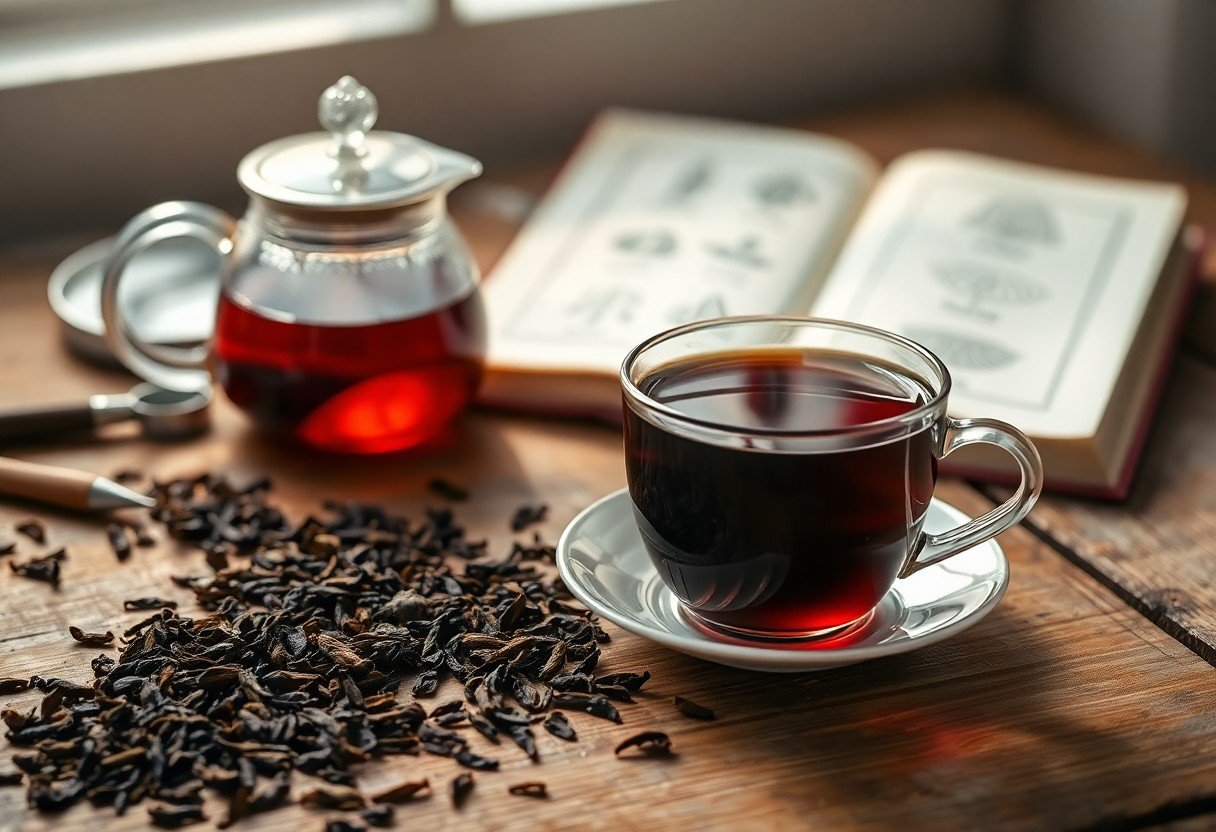
0 Comments